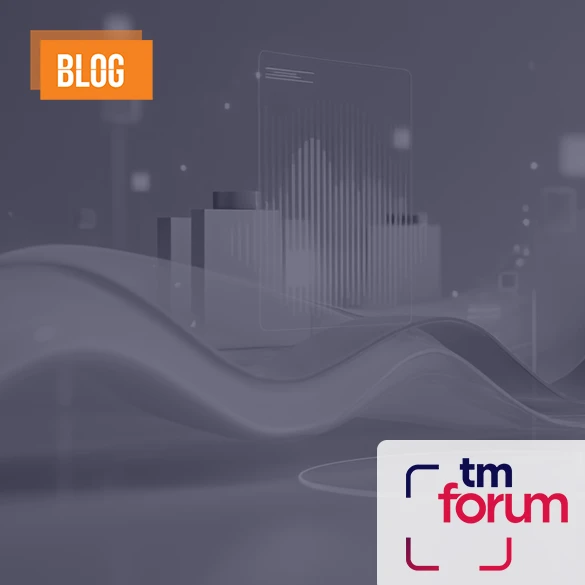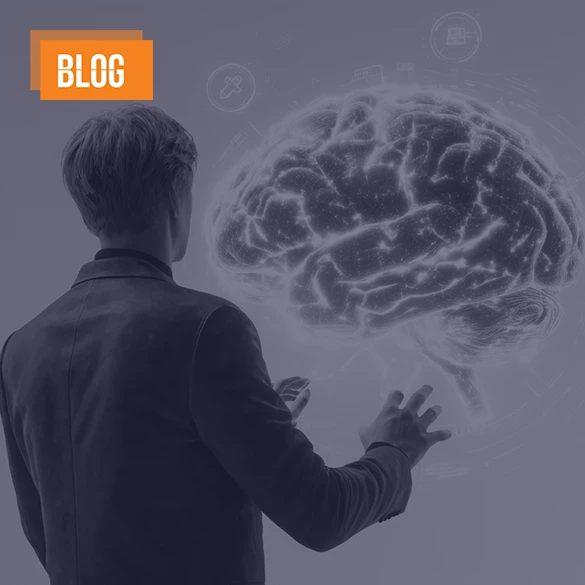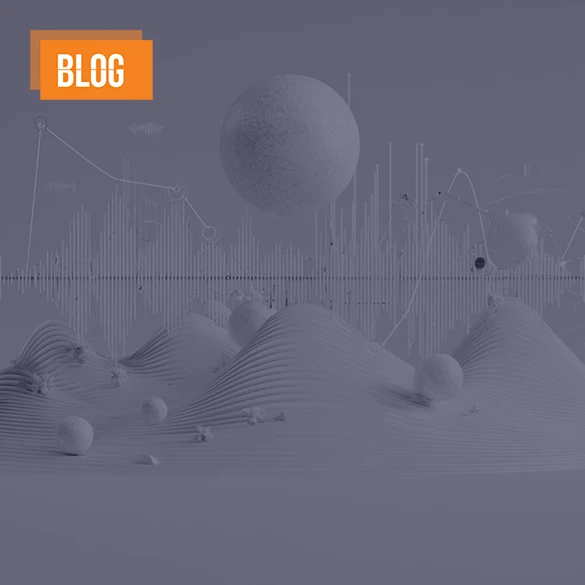Agents of Change: The Twin-Led Transformation of Telco CX

Telecom operators today face rising complexity and heightened customer expectations. Static customer profiles, siloed systems and fragmented data can no longer support the shift to AI-driven, hyper-personalized service experiences. This is where Digital Twins come into the picture: a living, evolving representation of a customer that fuses real-time behavioural, transactional, and contextual data, that transforms customer engagement and decision making.
Traditional CRM tools and churn models are typically static and reactive, they offer only broad segmentation and targeting, and they are not capable of adapting to constantly changing usage trends.
By integrating multiple data streams, a Digital Twin moves beyond static snapshots to a dynamic model that continuously updates as the customer’s needs and behaviours change. This enables operators to anticipate churn, deliver proactive assistance and support, and hyper-personalize offers to specific customers, not just to segments — driving both loyalty and revenue growth.
What makes today’s environment different is the powerful synergy between Digital Twins and modern AI. Agentic AI systems can run autonomous analytics on Twin data, surfacing insights and creating dynamic clusters for targeted actions. When integrated with predictive models and LLMs, these Twins form the backbone of a customer experience that is proactive, explainable, and deeply relevant.
As the telecom industry explores new opportunities like network slicing, smart city services, and ecosystem orchestration, Digital Twins serve as a safe experimentation layer that helps de-risk innovation. From 5G monetization to customer lifetime value growth, this shift from insights to real-time impact is becoming an industry imperative.
Digital Twins: From Static Profiles to Living Entities
Telecom operators have relied on static customer profiles for decades, using them to create broad segments and basic offers. However, in today’s hyper-connected world, these profiles often fall short. A Digital Twin changes that paradigm by acting as a real-time, evolving digital replica of each customer, built on continuously updated behavioural, transactional, and contextual data.
Consider a young family plan user who suddenly starts consuming significantly more mobile data due to hybrid working or new streaming habits. A static profile would fail to catch this trend until a billing cycle ends. A Digital Twin, on the other hand, ingests this new behaviour as it happens, surfacing insights that allow operators to proactively recommend better-fit plans for improved customer experience, to prevent bill shock and subsequent churn.
This shift from static records to living entities also introduces opportunities for data governance and privacy. Modern Digital Twin frameworks rely on anonymized, consent-based data flows to build trust with customers, ensuring compliance with regional regulations while still unlocking the value of real-time insights.
AI as the Brain: Orchestratinig Intelligent Twins
While a Digital Twin provides a rich representation of the customer, it is AI that transforms this data into actionable intelligence.
Large Language Models (LLMs) analyze unstructured data like customer support chats, emails, or call transcripts, identifying sentiment trends and new pain points that feed the Twin’s state.
Predictive models take this further by recognizing subtle signals that may indicate churn risk or upsell potential. For example, if a user’s data usage suddenly drops, the Twin can flag this anomaly, and a predictive churn model assesses the probability of service dissatisfaction. An anomaly model monitors for suspicious patterns in billing or device usage. Such contextualization, foresight and agility are key capabilities for operators to be able to react promptly, and avoid churn and revenue loss.
Retrieval-Augmented Generation (RAG) frameworks blend static corporate knowledge (e.g. information from internal knowledge base) with the live Twin data, to provide up-to-date, contextual answers.
Agentic AI layers on top of this, deploying autonomous analytics agents to detect patterns at scale. This creates group intelligence, enabling operators to dynamically cluster similar customer profiles for targeted campaigns or service enhancements.
Customer-Centric Telco with AI: From Reactive to Proactive
The traditional reactive approach “waiting for a customer to complain or churn” is increasingly unsustainable in a highly competitive market environment. A Twin-powered, AI-enabled approach flips this model by empowering both telcos and customers with continuous insight into each individual customer’s journey and predicted needs.
Imagine a Customer Sales Representative (CSR) handling a billing inquiry. Instead of having to sift through multiple systems for transaction history, the CSR sees a Twin dashboard — an intelligent and insightful customer 360 view — that is summarizing billing patterns, recent usage spikes, and recommended resolution paths. This significantly shortens resolution time and boosts satisfaction.
Marketers can also highly benefit from Digital Twin capabilities. Twin-powered AI agents provide support in creating hyper-personalized and context aware interactions at scale. They allow marketers to simulate and test campaigns in virtual environments before launch, predict responses and optimize offers to deliver best results both in terms of customer satisfaction and ROI. This capability, blending predictive analytics, real-time explainability and business simulation is a game-changer, as it provides a level of commercial foresight, that was not available before.
On the customer side, self-service experiences become dynamic. A customer logging into a portal can view personalized plan recommendations, simulate what-if scenarios, or accept AI-generated offers that adapt in real time.
Importantly, this dual-loop feedback means that every action and customer choice help refine the Twin and the AI models behind it. This closed loop drives continuous learning and ensures the system aligns with real-world outcomes, creating a more human-centric AI framework.
Value Realization: Business Outcomes from the Twin Stack
Value realization is where the promise of Digital Twins meets measurable impact. Telecom operators that integrate Twins with predictive AI and agentic orchestration unlock new growth pathways. For example, operators can see churn rates drop by 10-20% when retention strategies are triggered proactively using churn propensity scores.
Catalog Agents built on top of the Twin stack enable scenario testing: e.g. “What happens to ARPU if a family bundle is discounted for high-data users?” Predictive models simulate the revenue trade-offs, reducing reliance on gut instinct or static spreadsheets. By using twin-led simulations and Next-Best-Action (NBA) recommendations operators can achieve 5-10% ARPU growth in high-value segments.
An intelligent, Twin-powered customer dashboard also takes customer service processes and CSR efficiency to the next level. Providing true customer 360-views and in-context information and recommendations, it can lead up to 15% faster case resolutions, thus boosting both agent productivity and customer satisfaction.
KPIs such as Net Promoter Score (NPS), ARPU, Average Handling Time (AHT) for CSRs, and first-call resolution rates become interconnected. By tying these metrics back to real-time Twin insights, telcos shift from lagging to leading indicators, driving a culture of data-driven decision making.
What's Next: Agentic Futures and Digital Twin Ecosystems
Digital Twins are poised to evolve far beyond single-customer contexts. In the near future, telcos could deploy Agentic Simulations where multiple Twins interact to test strategic moves before executing them.
As an example, this could look like simulating the effect of a network upgrade on rural subscribers, predicting how usage patterns might shift and what interventions could mitigate churn. Another use case, in a smart city context, can be when connected Twins enable collaborative, real-time ecosystem orchestration across utilities, mobility, and financial services.
As vertical industries embrace digital ecosystems, Twins will play a role in co-creating value across partnerships. The twin-to-twin interaction concept means that predictive models and autonomous agents collaborate not just within a customer domain but across multiple stakeholders in a digital marketplace.
Explainable, Modular, Scalable
As AI capabilities expand, so does the need for explainability and trust. Consumers and regulators alike demand transparency in how decisions are made. This makes explainable AI (XAI) principles non-negotiable for Twin-powered operations.
When a Twin Insight recommends upselling a customer to a premium plan, it must be clear why this is appropriate. The prediction model should also show influencing factors, e.g. “Regular high data usage, above current monthly quota”. Such transparency ensures that CSRs and marketing teams can trust and act on the data with confidence. At the same time, telcos should have the tools to adjust or override AI-generated suggestions based on context, ensuring the human-in-the-loop remains a vital part of the ecosystem.
Equally, the microservices architecture supporting Twins must be modular and scalable. This design principle ensures new use cases can be layered without rebuilding core systems. Operators can test and deploy new AI models, integrate third-party data streams, or expand Twins to new verticals — all while maintaining control and compliance.
In the long run, this balance of transparency, modularity, and scale sets the foundation for resilient, future-proof customer experience strategies.
Conclusion
In the coming years, Digital Twins will become even more critical as operators evolve from reactive operations to autonomous, self-optimizing networks and experiences. With Twin-to-Twin interactions and Agentic Simulations, operators can test strategies at scale before rollout — improving accuracy and resilience.
Trust and transparency will remain vital. An explainable, modular, and scalable Twin stack ensures that AI recommendations are auditable and aligned with customer interests and regulatory frameworks.
Ultimately, the promise of Digital Twins is not just smarter operations, but a fundamental shift in how telcos orchestrate value: turning scattered data into living intelligence that continuously learns, adapts, and delivers measurable business outcomes. For forward-thinking CSPs, this marks the next stage in customer experience — where insight truly becomes impact.
-------
At Etiya, we are proud to have been recognized in the 2025 Gartner® Magic Quadrant™ for AI in CSP Customer and Business Operations for embedded AI capabilities, including Agentic AI, and digital twins. Read Gartner’s latest Magic Quadrant report here.
This recognition reflects our strong commitment to embedding advanced AI technologies, including AI agents, Agentic AI, and digital twin technologies directly into our next-generation BSS platform.








